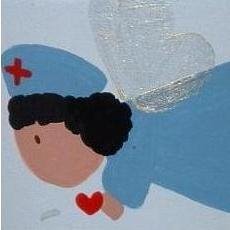Diabetic retinopathy: Blood vessels in the retina are affected. Can lead to blindness if untreated. Two primary stages (Proliferative and Nonproliferative. Retina may experience bleeding in nonproliferative stage. During the proliferative stage damage begins moving towards the center of the eye and there is an increase in bleeding. Any damage caused is non-reversible. Only further damage can be prevented.
Strabismus: Eyes are moving in different stages. The axes of the eyes are not parallel. Normally, treated with an eyepatch; however, eye drops are now used in many cases. Atropine drops are placed in the stronger eye for correction purposes. Surgery may be necessary in some cases. Suture surgery will reduce the pull of certain eye muscles.
Macular Degeneration: Impaired central vision caused by destruction of the macula, which is the center part of the retina. Limited vision straight ahead. More common in people over 60. Can be characterized as dry or wet types. Wet type more common. Vitamin C, Zinc, and Vitamin E may help slow progression.
Esotropia: Appearance of cross-eyed gaze or internal strabismus.
Exotropia: External strabismus or divergent gaze.
Conjunctivitis: Inflammation of the conjuctiva, that can be caused by viruses or bacteria. Also known as pink eye. If viral source can be highly contagious. Antibiotic eye drops and warm cloths to the eye helpful treatment. Conjunctivitis can also be caused by chemicals or allergic reactions. Re-occurring conjunctivitis can indicate a larger underlying disease process.
Glaucoma: An increase in fluid pressure in the eye leading to possible optic nerve damage. More common in African-Americans. Minimal onset symptoms, often picked to late. Certain drugs may decrease the amount of fluid entering the eye. Two major types of glaucoma are open-angle glaucoma and angle-closure glaucoma.










0 comments:
Post a Comment